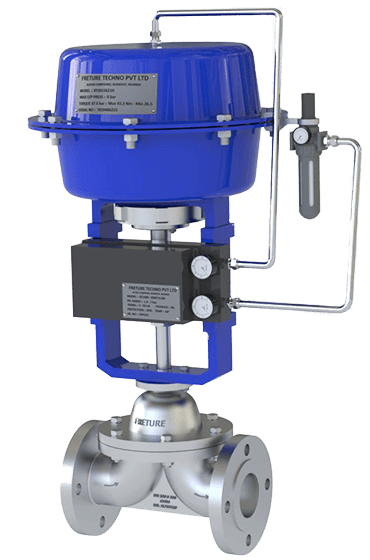Industrial fluid control systems demand high precision, efficiency, and reliability to optimize operations. Among various valve technologies, electric actuator diaphragm valves have emerged as a game-changer, offering advanced automation, improved accuracy, and enhanced process efficiency. These valves provide seamless, real-time control over fluid flow, making them ideal for industries such as pharmaceuticals, chemical processing, water treatment, and food production. This article explores how electric actuator diaphragm valves improve precision and efficiency in industrial applications.
Enhanced Precision Through Automated Control
One of the key advantages of electric actuator diaphragm valves is their ability to deliver highly precise flow control. Traditional manual valves rely on human operation, which introduces variability and potential errors. In contrast, electric actuators allow for programmable, automated adjustments, ensuring consistent and accurate fluid regulation.
High-Resolution Positioning: Electric actuators provide incremental movement control, allowing fine adjustments to valve openings, which enhances flow accuracy.
Feedback Mechanisms: Integrated sensors and positioners enable real-time monitoring and automatic adjustments based on pressure and flow rate requirements.
Elimination of Human Error: Since adjustments are automated, variations caused by manual operation are minimized, leading to improved process repeatability.
Increased Efficiency and Process Optimization
Efficiency is a crucial factor in industrial settings, where fluid control directly impacts production output, resource utilization, and operational costs. Electric actuator diaphragm valves contribute to optimized efficiency in multiple ways:
Energy Savings: Unlike pneumatic actuators, electric actuators do not require compressed air systems, reducing energy consumption and maintenance costs.
Faster Response Times: The rapid actuation capabilities ensure instantaneous opening and closing, reducing process downtime.
Remote Operation and Automation: Integration with SCADA (Supervisory Control and Data Acquisition) and IoT-based systems allows for remote monitoring and operation, reducing the need for on-site manual intervention.
Durability and Low Maintenance Requirements
Electric actuator diaphragm valves are designed for long-term performance with minimal maintenance. Unlike mechanical or pneumatic systems, which require frequent checks and repairs, electric actuators offer:
Self-Diagnostic Features: Advanced systems can detect faults, wear, or leaks before they become critical, preventing costly breakdowns.
Reduced Wear and Tear: The absence of pneumatic components eliminates issues related to air leaks, pressure drops, or moisture contamination.
Extended Service Life: Electric actuators experience less mechanical stress compared to other actuation methods, leading to longer operational lifespan.
Application in High-Purity and Corrosive Environments
Industries such as pharmaceutical manufacturing, semiconductor processing, and chemical production require high-purity and corrosion-resistant solutions. Electric actuator diaphragm valves provide superior contamination-free fluid control, thanks to:
Hermetic Sealing: The diaphragm design ensures that the actuator remains isolated from the fluid, preventing contamination.
Material Compatibility: Available in PTFE, EPDM, and stainless steel, these valves withstand aggressive chemicals and high-temperature conditions.
Compliance with Industry Standards: Designed to meet FDA, GMP, and ISO requirements for sanitary applications.
Conclusion
Electric actuator diaphragm valves represent a significant advancement in precision fluid control, offering unmatched accuracy, efficiency, and durability. Their ability to integrate with modern automation systems, coupled with low maintenance needs and energy efficiency, makes them an indispensable solution across various industries. As industrial processes continue to demand higher levels of precision and efficiency, these valves will play a crucial role in optimizing performance, reducing costs, and ensuring consistent, reliable operations.

No comments:
Post a Comment